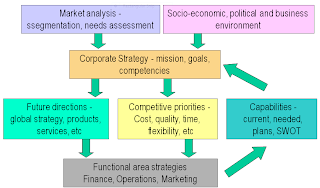Briefly in a layman's definition;
WCM is the art of deploying capabilities to improve
manufacturing operations and processes. In other words, our ability as a
company to have competitive advantage over our peers in the same or close to
business portfolio through reduced operational costs reduced lead times, speed
to the market, high quality products, exciting the customer at all times with
our products (exceeding customer expectations).
All the above being driven by people’s ways of working,
using the process technologies to its best capability and never being satisfied
with the present but hungry for what the future can bring.
It's important to remember very basic principles when setting foot for this endeavor; visualize this scenario: You're driving your car on a Saturday at 3:30 am in the night from your favorite night club going home for a rest. The only clear visible distance which you've got control over is only as far as your car headlights can flush, the rest of the journey & destination is a figment of your imagination of blurred dimensions.
To get home you've done several countless engagements with your car, put on full lights frequently, accelerated at higher speeds at some point, negotiated corners/bends, engaged gear 1,2, 3 up to what your car can offer and finally you are in your bed.
Yes, this should be the vision and tactics to apply when you decide to survive this volatile/harsh market conditions full of unsatisfied customers whose expectations change at a glint of lightening. Commitment by management to get rid of obsolete technologies ( be expecting to swallow the bullet of capital investment), building people capabilities to use engineering facilitated problem solving tools & TPM enablers, harnessing the possibilities of enterprise resources available in the market etc. You will be home enjoying the benefits of the WCM destination.
